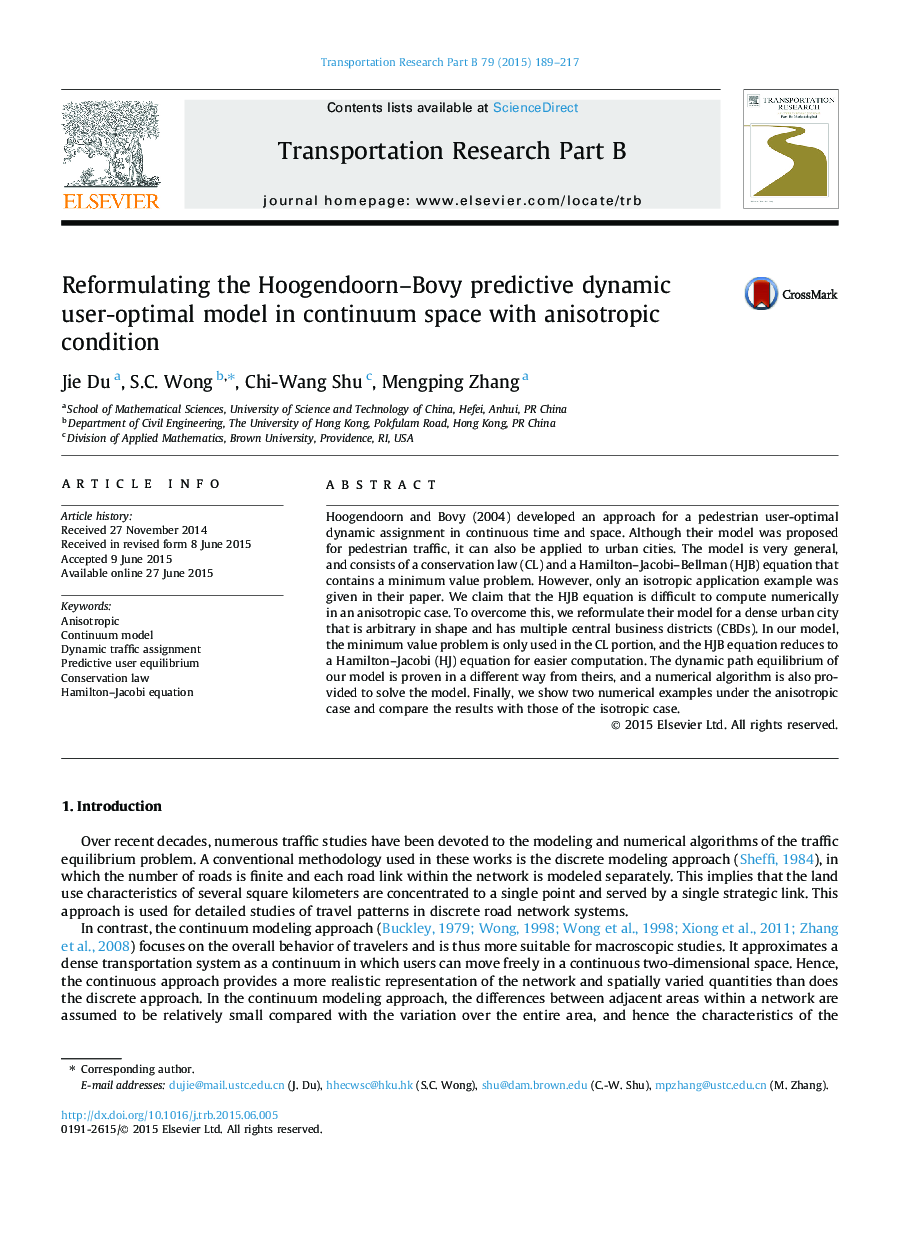| کد مقاله | کد نشریه | سال انتشار | مقاله انگلیسی | نسخه تمام متن |
|---|---|---|---|---|
| 1131809 | 1488964 | 2015 | 29 صفحه PDF | دانلود رایگان |

• The Hoogendoorn–Bovy model is difficult to compute in most anisotropic cases.
• We reformulate the Hoogendoorn–Bovy model with anisotropic condition.
• The Hamilton–Jacobi–Bellman equation reduces to a Hamilton–Jacobi equation.
• We provide an easy numerical algorithm to solve the minimum value problem.
• We provide numerical examples under the anisotropic case.
Hoogendoorn and Bovy (2004) developed an approach for a pedestrian user-optimal dynamic assignment in continuous time and space. Although their model was proposed for pedestrian traffic, it can also be applied to urban cities. The model is very general, and consists of a conservation law (CL) and a Hamilton–Jacobi–Bellman (HJB) equation that contains a minimum value problem. However, only an isotropic application example was given in their paper. We claim that the HJB equation is difficult to compute numerically in an anisotropic case. To overcome this, we reformulate their model for a dense urban city that is arbitrary in shape and has multiple central business districts (CBDs). In our model, the minimum value problem is only used in the CL portion, and the HJB equation reduces to a Hamilton–Jacobi (HJ) equation for easier computation. The dynamic path equilibrium of our model is proven in a different way from theirs, and a numerical algorithm is also provided to solve the model. Finally, we show two numerical examples under the anisotropic case and compare the results with those of the isotropic case.
Journal: Transportation Research Part B: Methodological - Volume 79, September 2015, Pages 189–217